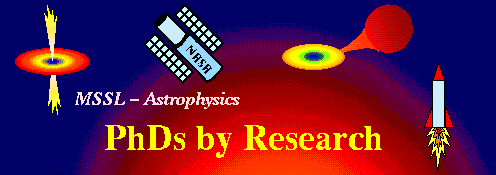

A major focus of work at MSSL is on objects that emit in the X- ray band. X-rays are emitted not only by ordinary stars but also by some of the most energy-intensive sources in the Universe, frequently associated either with condensed objects, such as neutron stars or black holes, or with pathological stellar conditions, such as RS CVn stars. Detailed observations at X-ray, ultraviolet and optical wavelengths of X-ray sources in our Galaxy are currently aimed at providing an accurate picture of the source geometry and studying phenomena such as accretion disk jets and winds. The masses and separations of binary sources and the presence of accretion disks are most important observational parameters that must be determined prior to a theoretical understanding of how the X-rays are generated. Research is also under way on the structure of X-ray emitting stellar coronae.
 Galactic research at
MSSL
Galactic research at
MSSL
Using observations in the millimetre/submillimetre waveband, we focus on studies of the flux and polarization variability of BL Lac objects and quasars, dust and gas in both radio galaxies and normal galaxies in the local universe, and deep surveys aimed at detecting dusty protogalaxies at high redshifts.
 Extragalactic research at
MSSL
Extragalactic research at
MSSL
![]() The Graduate School at
University College, London
The Graduate School at
University College, London
![]() All academic courses run by MSSL
All academic courses run by MSSL
Last modified 21st November 1997
www_astro@mssl.ucl.ac.uk